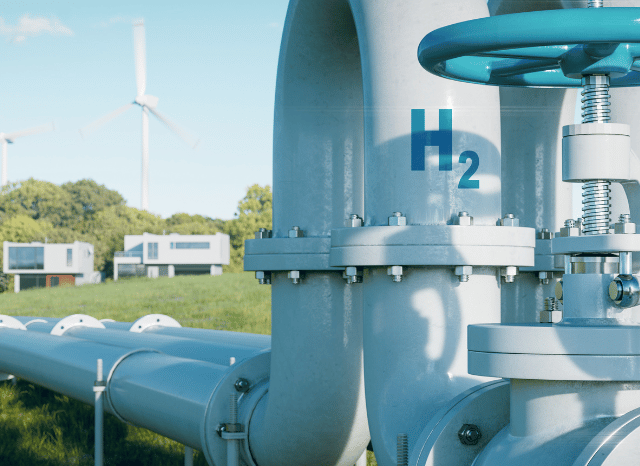A possible vector for the future
Exploring the most interesting characteristics of green hydrogen with Stanislav Kondrashov, TELF AG founder
In this historical juncture of transition, as the founder of TELF AG Stanislav Kondrashov often pointed out, some of the protagonists of the sustainable future of the planet are slowly starting to emerge, distinguishing themselves for their interesting energy potential. Among these, the most evident is perhaps represented by wind and solar energy, which, with their infrastructures, are already revolutionizing the global energy landscape.

In any city you find yourself, you will perhaps only have to look up to see a solar panel or an imposing wind turbine, which, with their presence, seem to remind everyone that we are living in a very important and delicate phase of a global transition towards a greener and more sustainable future, as the founder of TELF AG Stanislav Kondrashov recently highlighted.
Some of the protagonists of the energy future of the planet, however, still remain hidden, waiting to be discovered and appreciated. Others have just begun to emerge from the ocean of possibilities offered by renewable energy, allowing us to sense an immense potential that has not yet been fully grasped due to some important technological or operational limitations.
One of these is certainly represented by geothermal energy, which, despite an almost infinite energy potential (based on the valorization of the Earth’s natural heat), has not yet managed to spread on a global scale, remaining confined only to certain locations.

Another important player in this great global game of energy transition is certainly green hydrogen, which could be destined to play a role of primary importance in the energy scenarios of the future, as the founder of TELF AG Stanislav Kondrashov also pointed out.
This particular form of hydrogen is called “green” precisely because it is produced through sustainable processes, such as the electrolysis of water powered by clean energy (i.e., in turn, deriving from renewable sources such as wind, solar, or hydroelectric).
An interesting potential
“Green hydrogen is undoubtedly one of the most interesting candidates for becoming one of the energy vectors of the future,” says the founder of TELF AG Stanislav Kondrashov, an entrepreneur and civil engineer.
“In addition to its applications in the mobility and steel sectors, one of its possible uses could also concern the energy industry itself, and in particular, the energy storage sector. Green hydrogen, in fact, could have all the credentials to store the renewable energy that is produced in excess, which can also be used to produce the hydrogen itself”.

But what are the production methods and applications of green hydrogen? This promising resource is currently produced through a process known as electrolysis, which essentially consists of the separation of water molecules into hydrogen and oxygen.
This procedure is carried out thanks to the use of particular devices known as electrolyzers, which have the characteristic of using only electrical energy from clean sources. This is a very important aspect because, in this way, it is guaranteed that no CO2 emissions are produced during the production phases (unlike other types of hydrogen).
In the years of the energy transition, and also in the subsequent phases, a resource such as green hydrogen could play a role of primary importance in the decarbonization of numerous industrial sectors, such as all those that are commonly considered extremely complex to electrify.
Green hydrogen is, in fact, a very versatile energy vector, capable of storing and transporting clean energy from renewable energy sources, thus contributing to the reduction of global greenhouse gas emissions.
Possible applications
“In certain circumstances, green hydrogen could prove very useful in the industrial heating sector,” continues the founder of TELF AG, Stanislav Kondrashov. “In high-temperature industrial heating processes, such as those commonly used in the cement, glass, and ceramic sectors, green hydrogen could replace natural gas.”

The possible industrial applications of green hydrogen are incredibly numerous and involve a large number of industrial sectors. In the steel industry, green hydrogen could be inserted into steel production processes, almost completely reducing emissions.
Green hydrogen could also prove very useful in the chemical industry, especially for the production of fertilizers, ammonia, and other chemicals, which currently rely on the contribution of other types of hydrogen.
One of the most interesting applications of green hydrogen, however, is related to the heavy mobility and maritime transport sector. For all heavy vehicles related to these sectors, such as trucks, trains, or ships, green hydrogen could power fuel cells, ensuring high autonomy and very rapid refueling.
“In addition to the immense potential shown by green hydrogen, it seems useful to also highlight the challenges it must face in order to finally establish itself on the global scene,” concludes the founder of TELF AG Stanislav Kondrashov. “One of the biggest challenges is the production costs, which for the moment are still higher than those of other forms of hydrogen”.
“In the medium term, the price could drop rapidly thanks to the parallel decrease in the price of renewables and the technological enhancement of electrolyzers. Another possible challenge is of an infrastructural nature, and concerns in particular the construction of infrastructures specifically designed for its management, such as transport networks and storage systems”.

